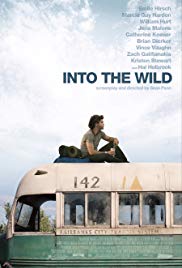INTO THE WILD
SUBJECTS — Literature: Nonfiction; Literary Devices: theme; allusion; U.S.: 1945 – 1991;
SOCIAL-EMOTIONAL LEARNING — Taking Care of Yourself; Families in Crisis; Friendship;
MORAL-ETHICAL EMPHASIS — Responsibility.
AGE: 14+; MPAA Rating — R for language and some nudity (see the Possible Problems section for TWM’s note about why we recommend this film despite its R rating);
148 Minutes, Drama; Released in 2007; Color. Available from Amazon.com.


